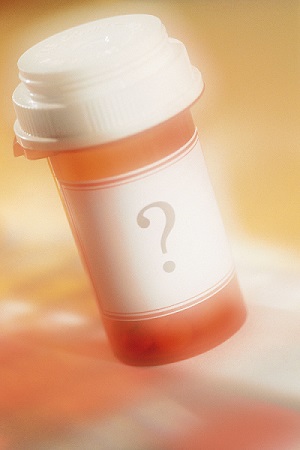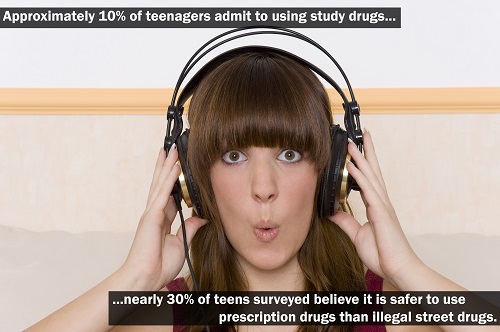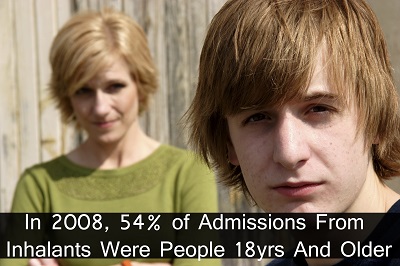The prescription drug abuse epidemic is an ongoing battle. Community awareness endeavors encouraged moms and dads to be more aware of the prescription drugs in family cupboards and to secure or remove those drugs. There have been prescription drug turn-in days to help parents responsibly dispose of unused prescriptions. Federal agents have been successful in closing down local pill mills and prosecuting complicit pharmacies here in America. But that does not mean that the supply line for illicit prescription drugs has been shut down. Overseas Internet pharmacies are only too happy to take up the slack.
 A watchdog group called Digital Citizens Alliance engaged the help of a 15-year-old boy to document the ease with which kids can order prescription drugs from abroad. The group videotaped the young boy calling an overseas pharmacy and ordering the prescription painkiller Percocet without a doctor’s prescription. During a second recorded call, this time asking for Hydrocodone, the boy confessed his age and mentioned that he was using his parent’s credit card to pay for the drug. The person at the other end of the call ignored the boy’s age and the lack of doctor prescription and merely asked for more credit card information.
A watchdog group called Digital Citizens Alliance engaged the help of a 15-year-old boy to document the ease with which kids can order prescription drugs from abroad. The group videotaped the young boy calling an overseas pharmacy and ordering the prescription painkiller Percocet without a doctor’s prescription. During a second recorded call, this time asking for Hydrocodone, the boy confessed his age and mentioned that he was using his parent’s credit card to pay for the drug. The person at the other end of the call ignored the boy’s age and the lack of doctor prescription and merely asked for more credit card information.
The group tested the drugs received through phone ordering. In some cases, the drug was exactly what it claimed to be, but in other cases, it was not. Orders for codeine from Pakistan delivered via India proved to be the real deal, but another order for Hydrocodone proved false. This demonstrates several of the problems with online pharmacies. They are difficult to track down and not reliable in terms of drug authenticity.
A second group called LegitScript spent five years investigating online pharmacies for the president. That group says that 97 percent of Internet pharmacies are not on the up and up and only rarely ask for a doctor’s prescription. In most cases, all a buyer is required to do is to fill out an online form. And, if you don’t have mom or dad’s credit card, no problem; Western Union works just as well.
There are more than 40,000 of these kinds of pharmacies. They pop up and disappear quickly. They sell to anyone who can show them the money. These overseas drug vendors have created a never-ending battle for law enforcement who can’t possibly track down every one of them. Prosecution is also difficult since there is another government involved.
Teens may not be raiding the family medicine chest, but they have found another way to get illicit prescription drugs. Parents need to educate teens about another reality however. It is illegal to sell drugs without a prescription and it is illegal to purchase them without a prescription too.
Curbing drug use isn’t something that can be solely dealt with at a national level. Effective policies must be put in place on a global scale. In 2010, approximately 5 percent of people all over the world, or 230 million individuals, admitted to engaging in illegal drug use at least once.
 The United Nations Office on Drugs and Crime (UNODC) has been working since 1961 to control drug use in order to preserve public health and welfare. Each year, illegal drugs claim the lives of around 200,000 people. So many of these individuals might not have had to die had they received the help they needed.
The United Nations Office on Drugs and Crime (UNODC) has been working since 1961 to control drug use in order to preserve public health and welfare. Each year, illegal drugs claim the lives of around 200,000 people. So many of these individuals might not have had to die had they received the help they needed.
Since its inception, the organization has made an effort to combat this issue not only with law enforcement, but also with policies that would address the deeper core issues of health and addiction.
According to Reuters, the UNODC global drug conventions that took place in 1961, 1971 and 1988 have helped standardize the world’s drug regulation policies, reducing the proliferation of illegal drugs. In fact, even as the world’s population has continued to multiply over the last hundred years, global production of opium, for instance, has decreased by 80 percent.
Many individuals addicted to drugs are sick and do not belong in a prison with hardcore criminals. While there are those who would say that legalizing drugs is the answer to combat the international drug problem, proponents of the UNODC efforts say that current measures are working.
But for these measures to continue being effective, countries around the world must offer education, rehabilitation, and social reintegration programs to drug offenders rather than prison sentences. Receiving these individuals as patients instead of criminals presents the greatest opportunity for change so that everyone has the chance to lead a healthy life free from drugs and crime.
Drugs available in your backyard? Teens say drugs easy to get their hands on in New Mexico.
25 Jun 2013
Teens and ‘Study Drug’ Abuse
Teenagers have been pulling all-nighters and cramming for tests for as long as schools have existed. Maybe even you have pulled an all-nighter, fueled by nothing more than a 2-liter bottle of caffeinated soda and the fear of telling your parents you failed an important test. Today, however, many teens are turning to something a lot more powerful than Pepsi or Red Bull to help them stay awake while they study. They’re using other substances — the kind that can lead to a serious drug addiction — to fuel their academic endeavors.
Study Drugs
The stimulants typically used as “study drugs” are medications — the kind frequently prescribed for mental health conditions such as attention-deficit hyperactivity disorder (ADHD) and narcolepsy. In teenagers with a legitimate medical need like ADHD, these drugs have a counterbalancing effect on the brain. In essence, they help create a calmer state of mind that allows the teen to focus more readily. When used properly by those who need them, prescription stimulants are not addictive.
These same medicines, however, have a different effect on teens who don’t struggle with ADHD. They start using these medications — for example Ritalin, Concerta, Metadate, or Adderall — with the belief that they will sharpen their focus, boost their energy, help them stay alert, and / or enhance their school performance. While the drugs may provide bursts of energy and improve alertness temporarily, they also quickly create a vicious cycle — the cycle that can easily lead to drug addiction. With continued use, teens often find they need increasing amounts of the drugs to get the same effect, so they keep upping the dose. Eventually they become so dependent on the drug that they can’t function without it.
The drugs, which have street names like Vitamin R, college crack, or Addy, can be taken in their original pill or capsule form. Some teens will crush the pill or open the capsule to snort the drug directly into their system. Regardless of how they are taken, there is no evidence that study drugs boost academic performance in teens not diagnosed with ADHD.
A survey found that approximately 10% of teenagers admit to using study drugs. However, the same survey also revealed that only one in 100 parents believe their teen is using the drugs. The study also found that use was concentrated among white students, while African-American and Latino teens tended to use them less. The use of study drugs rises to as much as 35% in college students. In addition, nearly 30% of teens surveyed believe it is safer to use prescription drugs than illegal street drugs.
Access to Study Drugs
Teenagers can be very savvy when it comes to acquiring these drugs, particularly if they’ve become addicted to them or already struggle with a drug addiction. For example, some will game the health care system by learning the symptoms of ADHD. They convince their parents and doctor that they have the disorder, receiving a legal prescription that then allows them access to one of these study drugs. This method may also permit some adolescents to receive the medication under a parent’s health care plan. This allows them to get the drug without coming up with the money to purchase it themselves.
Another way teens access study drugs is by theft. Some will take advantage of a family member with ADHD, stealing from his or her supply of legitimately prescribed medications. Some teens will steal physicians’ prescription pads to write out their own authorization for the drugs.
Some teens will illegally purchase stimulant medications. For example, they may buy a few pills from a friend who has a legitimate prescription. In fact, research shows that one out of every three teens believes it’s OK to take medications that have not been prescribed to them.
 Why Teens Abuse Study Drugs
Why Teens Abuse Study Drugs
Teenagers face increasing pressure to succeed in school. Kids can be worried that if they don’t get good grades, they won’t be accepted into competitive colleges, won’t win needed grant or scholarship funds, or will become ineligible for high school or college sports. When health science researchers analyzed Twitter feeds for 6 months, they found that Adderall mentions spiked during typical finals periods. Mentions of the study drug were also higher mid-week and lower on the weekend. The findings suggest that students are talking about Adderall during the usual periods of academic stress.
Danger of Study Drug Addiction
Like any prescription medication, ADHD drugs have side effects — some of which are quite common with medications in general. Teens who take these drugs may experience stomach upset, sleep problems, decreased appetite, or daytime drowsiness. Long-term use can also slow height gain, with at least one expert reporting that a user might be as much as a quarter-inch shorter each year.
Study drug abuse has other side effects as well. For example, some individuals taking ADHD medications have reported heart problems. This can be an especially serious issue if an abuser lives with an undiagnosed heart condition. A teen might also develop tics, or repetitive motions, such as head jerking or excessive blinking.
Stimulants may also alter mood. This often occurs as the effects of the drug wear off. Sometimes referred to as the “rebound effect,” some teens may become very sensitive or more irritable. Others may appear to react differently than is normal for them. For example, they may appear to be sad even though they don’t feel sad. These types of side effects are more common in short-acting stimulants.
The abuse of study drugs can also mask the effects of alcohol. A teen using study drugs and drinking may not realize how intoxicated he’s become. He may binge drink because he doesn’t feel the effects of the alcohol. The combination of alcohol and stimulant medication can lead to dangerous situations that result in blackouts, alcohol poisoning, drunken driving and serious accidents and injuries. Approximately two out of three emergency room visits involving ADHD medications also involved at least one other substance, such as alcohol.
Warning Signs of Study Drug Abuse
- Altered mood or behavior, including irritability or intense mood swings
- Periods of sleeplessness
- Decreased appetite or weight loss
- Lapses in memory
- Dilated pupils
- Dry nose and mouth
- Secretive behavior, such as isolation or unexplained spending
What Parents Can Do
If you suspect your teen is abusing study drugs, seek professional help. An addiction specialist can help you come up with a plan to get your teen into rehab. Treatment will include a mental health assessment to identify other challenges your teen may be facing. For instance, he or she may have a co-occurring mental health condition, such as depression or anxiety, that is contributing to the addictive behavior.
Because study drug abuse is often triggered by a desire to perform well, therapy can teach your teen how to deal with stress and anxiety in a healthy manner. A therapist may introduce helpful relaxation techniques, such as breathing exercises or progressive muscle relaxation. Other recommended stress relief remedies may include physical activity, like regular exercise, or a creative outlet, such as journaling.
If your teen does not have ADHD and is abusing Adderall or other stimulant medications, it can lead to drug addiction. Talk with an addiction expert who’s experienced with treating adolescents. Your teenager’s life and well-being are worth more than his or her ability to excel in school.
Read More about Student Drug Abuse: College Student’s Death Sparks Renewed Warnings About the Dangers of Inhalants
 The war on drugs has cost tax payers billions of dollars. In 2010 alone, the misuse of drugs cost America nearly 40,000 lives. Alcohol was blamed as a factor in about 85,000 deaths. Prescription drug abuse led to more than 22,000 deaths in 2010.
The war on drugs has cost tax payers billions of dollars. In 2010 alone, the misuse of drugs cost America nearly 40,000 lives. Alcohol was blamed as a factor in about 85,000 deaths. Prescription drug abuse led to more than 22,000 deaths in 2010.
New statistics coming out of the state of New Mexico are causing worry among health officials there. The state has some of the most alarming statistics when it comes to alcohol abuse. New Mexico holds the inauspicious record for the highest number of alcohol-related deaths in the nation since 1997. Drug abuse in the state also lands it squarely in the top three states year after year.
What’s leading to the massive rate of use and abuse in New Mexico? The New Mexico Youth Risk and Resiliency Survey of middle school and high school students found that many youths can easily obtain illegal substances with few, if any, significant obstacles in their way. Two-thirds of that survey’s recipients said that alcohol is readily accessible.
The survey found that 66 percent of teens judged access to marijuana as “uncomplicated.” In addition, 28 percent of high-schoolers said that “hard drugs” were readily accessible.
The state is getting “SWAT” teams in on the action by establishing relationships with the state’s youth. But these are not the SWAT teams dressed in black, carrying assault weapons. SWAT stands for Student Wellness Action Team. The members work with public and private schools to provide alcohol and drug awareness to youths across the state.
The problem of inhalant abuse has surfaced again in a recent story from California, where nitrous oxide abuse is linked to the death of a college student. According to the Substance Abuse and Mental Health Services Administration (SAMHSA), over 1 million Americans abuse inhalants each year, and they’re keen to point out that the problem is far from confined to adolescents. In the wake of the incident, law-makers in California are looking at implementing new legislation and raising awareness to reduce the numbers of needless deaths from inhalant abuse. However, the strategy appears to be geared toward young people, when national research has shown that the majority of inhalant admissions are actually from adults.
The Recent Death
Nineteen-year-old Claremont McKenna College student Ali Mirza was found with nitrous oxide canisters, or “whippets,” in his dorm room when he died. He was rushed to Pomona Valley Hospital Medical Centre, after paramedics failed to revive him at the scene of the incident last month. He was pronounced dead at 2am on May 17th, and his funeral is scheduled for the June 15th. His family and friends will mourn his untimely passing, but the increased efforts of police officers and law officials to combat inhalant abuse may prove to have positive consequences for LA’s youth.
The Dangers of Inhalants
“Inhalants” is actually a fairly broad term to describe drugs that are “huffed” by users and many different substances could fall under the group. These include paint, marker pens, glue, air freshener, butane and substances like nitrous oxide. Despite the large number of substances used, most of them have similar effects to anesthetics and carry numerous potential risks. The most widespread (being a possibility with all inhalants) is sudden sniffing death syndrome, which basically results from a disturbance to the heart’s natural rhythm and is often fatal. Inhalants can also cause brain cell death, lung damage, short-term memory loss, and liver and kidney damage.
Nitrous oxide balloons (commonly known as “laughing gas”), in particular, pose a problem because the effect of a single “high” only lasts for five minutes or less. This means that users will generally repeat doses in a single evening of use, and this multiplies the potential for damage. When the user is “huffing,” he is depriving himself of oxygen, and repeated oxygen deprivation can lead to unconsciousness or—over time—brain damage.
The Response
The problem of inhalant abuse has been on the rise among California youths, according to Veronica De Alba (a deputy city attorney in LA), and this has led her to push for increased legislation to protect California adolescents. Police in the area are working on an ongoing 15-month investigation – entitled “Operation No Laughing Matter” – to curb the usage and availability of nitrous oxide. This has dramatically reduced the supply of the drug in the LA County area, but a continued effort is evidently required to prevent resurgence in usage down the line.
 Not Just Teens
Not Just Teens
Research from SAMHSA has shown that adults actually make up the majority of admissions to treatment facilities for inhalant abuse. The study showed that out of all admissions to treatment facilities for inhalant abuse, 54 percent were from people aged 18 or over in 2008. Admittedly, the majority of these admissions (52 percent) were from those in the 18 to 29 age group, but it still calls the adolescent focus of recent efforts into question.
While there is obviously a problem with inhalant abuse among teens, the problem is far from confined to them, and any public health-focused responses should take this into account. The sad truth is that inhalant abuse, like all drug abuse, may be commonly associated with troublesome youths, but it’s actually common in people from all walks of life. Some similar assumptions, which may be made about the race of inhalant abusers, were also addressed by the study and the results showed that the majority of the admissions were white males.
Broadening the Scope of Prevention and Education
Public awareness of the dangers of huffing will undoubtedly be improved by the recent story, but it’s important that you don’t mentally file it way as something that only really affects young people. The negative health impacts of huffing don’t discriminate based on age—they can affect any user—and research seems to show that adults are actually more likely to be heavy huffers. Broadening the scope of inhalant awareness campaigns to also appeal to adults initially seems like an unnecessary step, but statistics tell us that it’s just as vital as targeting teens and young adults.
23 Mar 2013
Mothball Abuse
The variety of substances misused by people at times seems staggering. It is especially alarming when teenagers come up with a different everyday substances to consume, smoke, or inhale for a high. When they cannot get access to alcohol or street drugs, kids often turn to household items. Using inhalants like aerosol cans, for instance, is nothing new. Popping up on the radar now, however, is abuse of mothballs. The smelly, moth-deterring balls that protect wool sweaters are giving some kids a high and sometimes leading to health consequences as well.
Read More
16 Mar 2013
Austin Drug Rehab and Treatment
Drug use in Austin, Texas and around the United States is a rising problem. More and more people, especially young people, are experimenting with drugs, in particular prescription painkillers and marijuana. Often those who are using these drugs assume that they are not dangerous in the way that illegal narcotics like cocaine or heroin are. They are mistaken, however, and using these substances can lead to health problems, addiction, and even overdose and death in extreme situations. Although abuse and addiction are on the rise, there are ways to get help. If you are living in Austin with a drug problem, there are places you can go and professionals to whom you can turn to get help coming clean.
Read More
27 Feb 2013
Ritalin: Gateway Drug or Safe Prescription?
Ritalin is a commonly prescribed psychotropic medication, most often given to children to treat the symptoms of attention deficit hyperactivity disorder, or ADHD and attention deficit disorder, or ADD. The generic name for Ritalin is methylphenidate and it is also prescribed to treat narcolepsy, a sleeping disorder. A psychotropic medication is one that is prescribed for the treatment of psychiatric disorders and that passes from the bloodstream to the brain to act on the central nervous system. Psychotropic drugs have the potential to cause changes in mood, cognition, behaviors, perception, and consciousness. For this reason, they are often abused, misused, and cause addiction.


